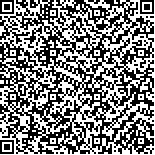下载中心
优秀审稿专家
优秀论文
相关链接
摘要

根据多时相NOAA AVHRR卫星遥感数据和准同步实测表层含沙量资料,分别利用经暗像元大气校正的遥感图像灰度值、R1-R2相关关系曲线的斜率,以及泥沙指数等参数,建立泥沙遥感定量模式(灰度法、斜率法和泥沙指数法),并对3种模式的效果和适用性进行了比较。灰度法由于只用了单个波段的光谱信息,模式的相关性较差;斜率法通过计算R1-R2关系曲线的斜率,达到大气校正的目的。但由于在泥沙浓度交界面存在斜率值跃变现象,会影响最终效果;泥沙指数法综合运用了Ch1,Ch2波段的光谱信息,模式的相关性较好,可获得层次丰富泥沙图像。
According to the multi-temporal NOAA/AVHRR imagery and near simultaneously acquired in-situ surfacelayer sediment data,this paper uses 3 kinds of parameter,i. e.the gray values of the imagery,the slope of R1-R2 relative curve,and the sediment index to establish the quanittative retrieval models for sediment's concentration respectively,and to assess their application efects. The correlation of the model obtained form the gray value method,for using only the spectral informaiton of one band, is not very good; The slope method corrects the atmospheric afection by computing the R1-R2 relative curve, and the model from it is stable. While, the sudden change of the slope value often happens in the interface of the water of diferent sediments concentration, which will affect the result. The sediment index method uses the spectral infornmation of Ch1 andCh2.a good quanittaitve model and imagery with plenty of sediment information are deirved.

